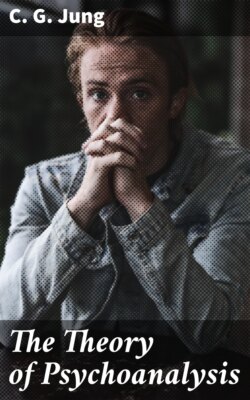Читать книгу The Theory of Psychoanalysis - C. G. Jung - Страница 14
На сайте Литреса книга снята с продажи.
CHAPTER II
The Infantile Sexuality
ОглавлениеTable of Contents
The precocious manifestations of sexual phantasy as cause of the shock now seemed to be the source of neurosis. This, logically, attributed to children a far more developed sexuality than had been hitherto admitted. Many cases of precocious sexuality had been recorded in literature long before the time of psychoanalysis. For instance, a girl of two years old with normal menstruation, or cases of boys of three and four and five years of age having normal erections, and so far ready for cohabitation. These were, however, curiosities. Great astonishment was caused when Freud began to attribute to the child, not only ordinary sexuality, but even polymorphic perverse sexuality; all this based upon the most exhaustive investigation. People inclined much too lightly to the superficial view, that all this was merely suggested to the patients, and was a highly disputable artificial product. Hence Freud’s[4] “Three Contributions to the Sexual Theory” not only provoked opposition, but even violent indignation. It is surely unnecessary to insist upon the fact that science is not furthered by indignation, and that arguments of moral resentment may perhaps please the moralist—that is his business—but not a scientific man, for whom truth must be the guide, and not moral indignation. If matters are really as Freud describes them, all indignation is absurd; if they are not so, again indignation will avail nothing. The conclusion as to what is the truth can only be arrived at on the field of observation and research, and nowhere else. The opponents of psychoanalysis with certain honorable exceptions, display rather ludicrously a somewhat pitifully inadequate realization of the situation. Although the psychoanalytic school could unfortunately learn nothing from their critics, as the criticism took no notice of its investigations, and although it could not get any useful hints, because the psychoanalytic method of investigation was, and still is unknown to these critics, it remains a serious duty for our school to explain thoroughly the contrast between the existing conceptions. It is not our endeavor to put forward a paradoxical theory contradicting all existing theories, but rather to introduce a certain category of new observations into science. Therefore we regard it as a duty to do whatever we can to promote agreement. It is true, we must renounce all hope of obtaining the approval of those who blindly oppose us, but we do hope to come to an understanding with scientific men. This will be my endeavor now in attempting to sketch the further intellectual development of the psychoanalytic conception, so far as the so-called sexual theory of the neuroses is concerned.
